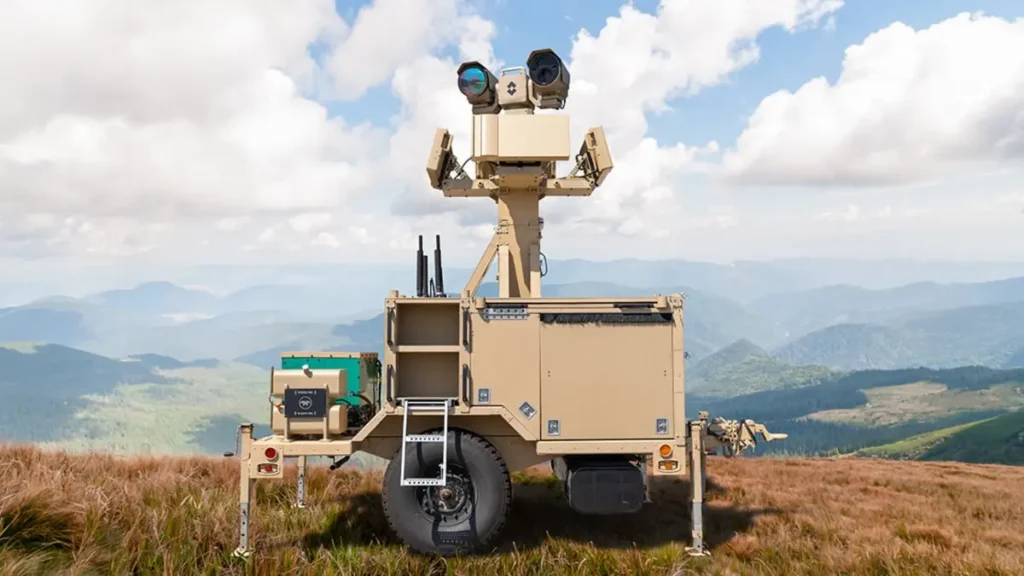U.S. Northern Command held the first demonstration of weapons to counter unmanned aerial systems (UAS) at Fort Carson, Colorado, in October 2024. One participating vendor was Teledyne FLIR, which featured its Cerberus XL C-UAS in the exercise. TELEDYNE FLIR
U.S. Northern Command (USNORTHCOM) conducted the first tests of systems to detect, track and defeat small unmanned aerial systems (UAS) in October 2024. The Falcon Peak initiative by the U.S. Department of Defense (DOD) from October 19 to October 30 at Fort Carson, Colorado, highlighted the increasing importance of countering UAS threats to the United States.
Several incursions by unidentified UAS near Virginia military installations remain under investigation, and the 2023 incidents are being incorporated into an evolving layered defense of the U.S., a top defense official said. Gen. Gregory M. Guillot, commander of the North American Aerospace Defense Command (NORAD) and USNORTHCOM, told reporters at Peterson Space Force Base in Colorado in October 2024 that a 90-day assessment of the UAS activity around Langley Air Force Base in Portsmouth by his staff concluded that USNORTHCOM should coordinate the military and government response to the potential threat.
Planning for the Falcon Peak exercise began in 2023, and interested vendors were invited to participate. Numerous military experts have noted the importance of small UAS on the battlefields of Ukraine and of the need for the U.S. to develop counter measures to disarm the highly mobile weapons.
One system used in the trials was Teledyne Cerberus XL, developed by the Oregon company Teledyne FLIR, which has been used in combat in Ukraine. The company has a $31 million contract to supply the Cerberus XL to the Ukrainian military, according to interestingengineering.com, a science and technology news site. The counter-UAS system combines long-range 3D radar, thermal and visual sensors and other technology to locate UAS targets and neutralize threats up to 3 kilometers away. “Feedback from its combat use has highlighted its capabilities, with the system proving effective at detecting, tracking and neutralising multiple … UAS threats, even under severe conditions. The system’s ability to detect up to 500 targets simultaneously has been critical in defending against complex drone swarm attacks,” the site reported.
Falcon Peak demonstrated a public-private partnership that brings together cutting-edge technology and military expertise, defense officials said, according to CUAS Hub, a counter UAS technology website. “The excellent collaboration with military and technology partners demonstrated the value of field exercises like Falcon Peak in advancing our understanding of counter-drone strategies,” said an official involved in the experiment.
The evolving threat posed by UAS incursions or attacks are likely to be a feature of warfare for the foreseeable future, making future tests a high priority for the DOD. “At the conclusion of Falcon Peak, U.S. officials emphasized the importance of such initiatives in advancing the Department of Defense’s ability to adapt to the evolving security challenges posed by small UAS. The results of the experiment will provide insights for future strategies and offer a better understanding of how to protect U.S. military bases from drone-related threats,” reported armyrecognition.com, a military affairs website.

